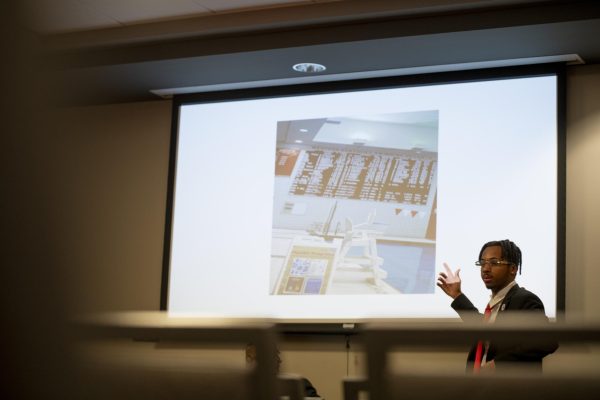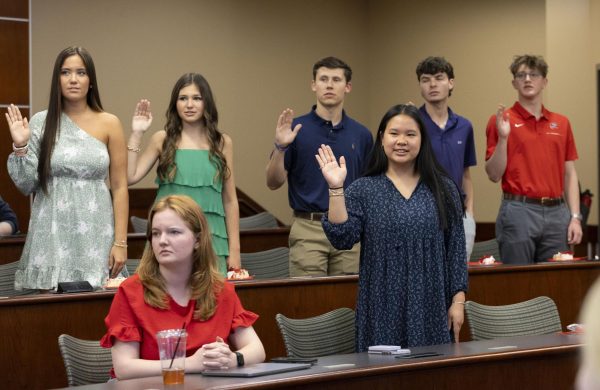Challenges face privatized Health Services
May 8, 2014
If Health Services is successfully privatized, the money from student tuition that would normally go to Health Services will now go toward balancing the budget.
Last month, President Gary Ransdell announced that the university submitted a Request for Proposals for private medical providers to run Health Services.
Ann Mead, vice president for Finance and Administration, said if privatization is successful, $1.1 million will be reallocated from Health Services to balance the budget. The portion that normally goes toward Health Services is now called a subsidy, but it used to be a separate Health Services fee.
“You’re supposed to, basically, when you’re revenue dependent, generate all the revenue necessary to cover your direct costs,” Mead said. “So it’d be hard to call it revenue dependent when you know that you’ve got a certain amount of tuition allocating to Health Services, so that’s why it’s considered a subsidy.”
Fiscal year 2001-2002 was the last year the Health Education and Awareness fee was collected from students, according to university documents. After that, the fee was discontinued and there was a restricted tuition allocation that went to fund various student services, including Heath Services. When the fee was collected in 2001-2002, the total amount was $435,049. The year before that, it was $73,701 and in fiscal year 1999-2000, it was $806,923.
Mead said the significant decrease from one year to the next likely occurred when WKU previously outsourced Health Services to Collegiate Health Care. However, the university began to run the health center again after Collegiate Health Care went bankrupt and couldn’t build a new building or operate the clinic.
There also used to be automatic increases to the budget of the restricted tuition allocation that went toward funding Health Services because of the Higher Education Price Index.
Now, Mead said no one has a guaranteed increase.
She said the subsidy had been in a category called “restricted tuition,” which gave it special treatment. When there was no special treatment, there was no reason it should be separately identified.
There is also a Health Services reserve fund. As of June 30, 2013, that reserve fund was $1.4 million, subtracting $114,566 to cover operations.
“Last year, they had to draw down that reserve by about $115,000, which meant that their revenue plus the institutional subsidy was $115,000 short of covering their operating costs,” Mead said. “And last year was the first time they had done that in several years.”
While Mead said Health Services has had good years and that is why there’s money in the reserve fund, the total budget for Health Services this year is $2.6 million, and the projected revenue for this year for providing medical care is only $1.3 million, about a $1 million shortfall.
It is undetermined what that reserve fund money will be used for. If Health Services is successfully privatized, that will go into effect on Aug. 1.
“But we have to fund all of July,” Mead said. “And July’s not one of those months where we have a lot of students on campus. Patient volume slows down a bit. That’ll be one use of it, but there’s no other plans as of this point of what that would be used for.”
The university issued a Request for Proposals on April 15. Private medical providers who want to submit a bid to provide medical care for the campus must do so by May 23. A Request for Proposals committee will evaluate the bids.
“The RFP laid out extensively what the services are currently so that whoever wants to consider bidding, it’s not that we tell them that they have to match what we’re doing, but it wouldn’t be unreasonable to say that there’s certain expectations that the level of services would be comparable,” Mead said.
“What we would like to be able to see is that a medical provider could come in and have sufficient revenue to cover the operating expenses of Health Services without that $1.1 million the university’s putting in,” she said. “We can’t say same services because I can’t predict exactly what a new medical provider would provide. The better terminology is we want to provide quality healthcare that meets the needs of students.”
Ransdell said he thinks private sector providers could be very effective.
“…I presume they could maintain a profitable business and operate in a much more efficient manner than we might be able to operate,” he said.
Mead said another factor to consider for the proposals submitted is how the provider would go about evaluating and potentially hiring the current employees at Health Services.
“It will be unfortunate, but there will probably be some employees that won’t get hired by the new medical provider,” she said. “But we hope a lot of them will. For those that don’t get hired, we’re going to facilitate anything we can about any other campus positions that open up and if they meet the minimum qualifications, make sure that they get an interview.”
The director of Health Services could not be reached for comment.
The private medical providers who would run Health Services would not own it; the building would be leased. The Health Services building was opened in 2008 and cost approximately $5.8 million. There will be debt on the building until 2026.
If Health Services is not privatized, Mead said the university would have a $1.1 million budget problem.
“There’s uncertainty about what will happen through this RFP process,” she said. “We’re hoping that it’s something beneficial to WKU and students can have quality healthcare and we’ll just see how this unfolds over the next few months.”
Ransdell said if the center isn’t privatized, the Health Services staff would be challenged to operate the center without the subsidy, and the center would possibly open for public use.
“Certainly, the staff continuing to operate the health center does remain a possibility,” he said. “We just won’t know until the end of May.”
Mead said the university would not consider shutting down Health Services altogether.
“It’s an important service,” she said.

























